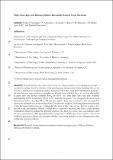Files in this item
Great apes and human children rationally monitor their decisions
Item metadata
| dc.contributor.author | O'Madagain, Cathal | |
| dc.contributor.author | Helming, Katharina A. | |
| dc.contributor.author | Schmidt, Marco F. H. | |
| dc.contributor.author | Shupe, Eli | |
| dc.contributor.author | Call, Josep | |
| dc.contributor.author | Tomasello, Michael | |
| dc.date.accessioned | 2022-03-24T09:40:59Z | |
| dc.date.available | 2022-03-24T09:40:59Z | |
| dc.date.issued | 2022-03-30 | |
| dc.identifier | 278113893 | |
| dc.identifier | c9cfa5b9-5022-441f-8c5d-2ffbcd5b98f4 | |
| dc.identifier | 35317676 | |
| dc.identifier | 85126838002 | |
| dc.identifier | 000784192600005 | |
| dc.identifier.citation | O'Madagain , C , Helming , K A , Schmidt , M F H , Shupe , E , Call , J & Tomasello , M 2022 , ' Great apes and human children rationally monitor their decisions ' , Proceedings of the Royal Society B: Biological Sciences , vol. 289 , no. 1971 , 20212686 . https://doi.org/10.1098/rspb.2021.2686 | en |
| dc.identifier.issn | 0962-8452 | |
| dc.identifier.other | ORCID: /0000-0002-8597-8336/work/110423292 | |
| dc.identifier.uri | https://hdl.handle.net/10023/25080 | |
| dc.description.abstract | Several species can detect when they are uncertain about what decision to make –revealed by opting out of the choice, or by seeking more information before deciding. But we do not know whether any nonhuman animals recognize when they need more information to make a decision because new evidence contradicts an already-formed belief. Here we explore this ability in great apes and human children. First, we show that after great apes saw new evidence contradicting a prior belief about which of two rewards was greater, they stopped to look for more information before deciding. They did not just register their own uncertainty, but attempted to resolve the contradiction between their belief and the new evidence, indicating rational monitoring of the decision-making process. Children did the same at five years of age, but not at three. In a second study, participants formed a belief about a reward’s location, but then a social partner contradicted them, by picking the opposite location. This time even three-year old children looked for more information, while apes ignored the disagreement. While apes were sensitive only to the conflict in physical evidence, the youngest children were more sensitive to peer disagreement than conflicting physical evidence. | |
| dc.format.extent | 6 | |
| dc.format.extent | 241894 | |
| dc.language.iso | eng | |
| dc.relation.ispartof | Proceedings of the Royal Society B: Biological Sciences | en |
| dc.subject | Rational monitoring | en |
| dc.subject | Great-apes | en |
| dc.subject | Children | en |
| dc.subject | Decision-making | en |
| dc.subject | Information-seeking | en |
| dc.subject | Metacognitive monitoring | en |
| dc.subject | BF Psychology | en |
| dc.subject | DAS | en |
| dc.subject.lcc | BF | en |
| dc.title | Great apes and human children rationally monitor their decisions | en |
| dc.type | Journal article | en |
| dc.contributor.institution | University of St Andrews. Centre for Social Learning & Cognitive Evolution | en |
| dc.contributor.institution | University of St Andrews. School of Psychology and Neuroscience | en |
| dc.identifier.doi | https://doi.org/10.1098/rspb.2021.2686 | |
| dc.description.status | Peer reviewed | en |
This item appears in the following Collection(s)
Items in the St Andrews Research Repository are protected by copyright, with all rights reserved, unless otherwise indicated.

